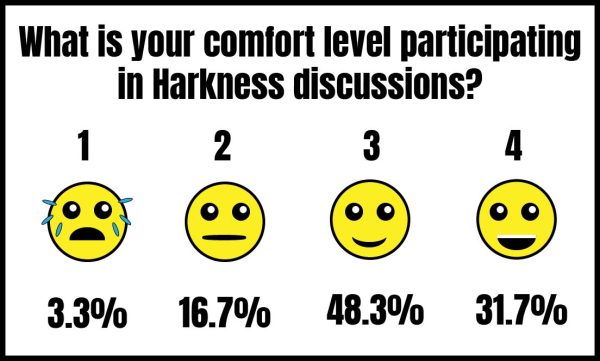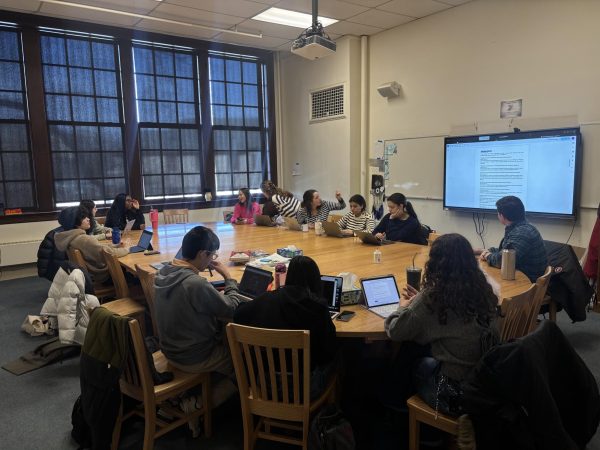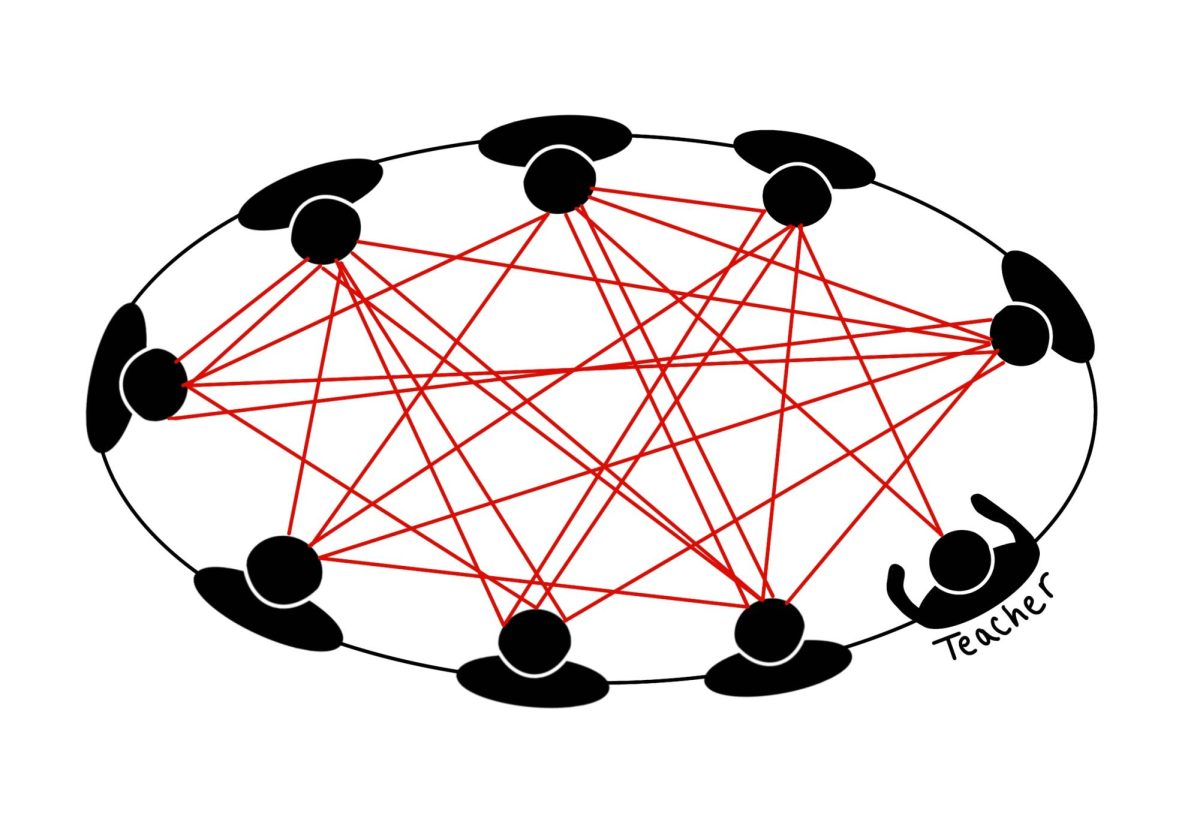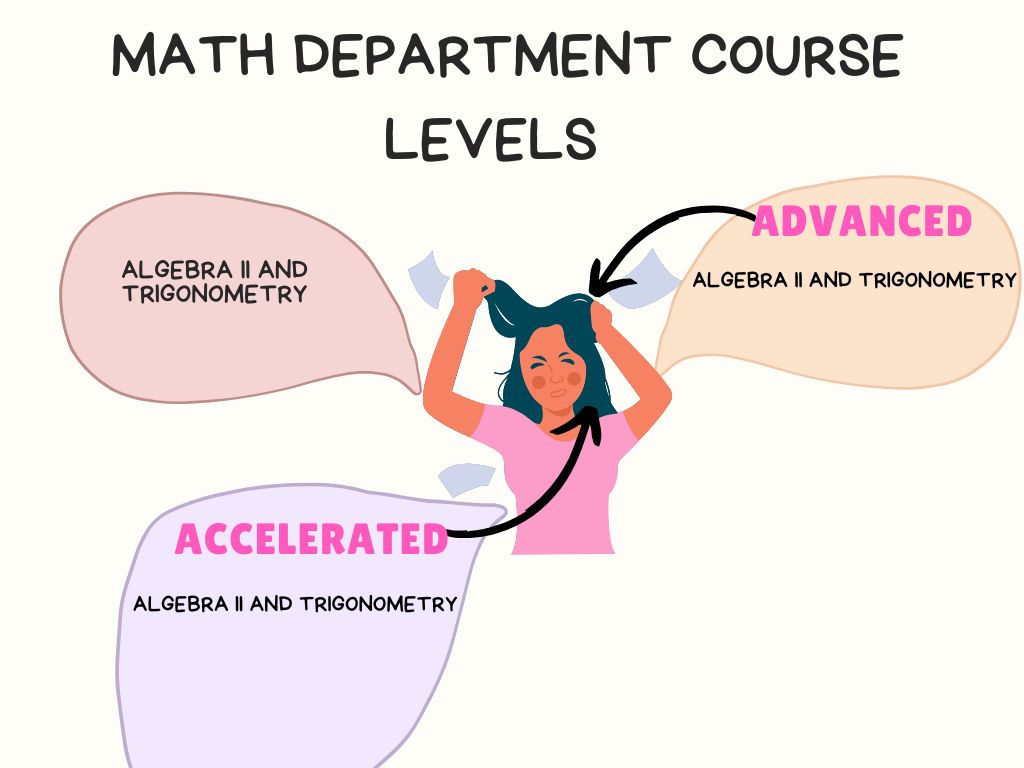At Hackley, our Harkness tables are more than wooden places to sit; they are the heart of Hackley English and vital tools for the discussion-based Harkness method. In theory, this method helps students develop excellent conversational skills, but in practice, does it work for all students? As Hackley continues to refine its approach, questions remain surrounding how the department works to support students with varying personalities and learning styles in a discussion-based system.
The Harkness method is a style of teaching that was developed at the Phillips Exeter Academy in 1930 and is meant to resemble a conference-like discussion as opposed to a traditional lecture. Students sit at one large oval table and engage in conversation by bouncing off the ideas of their peers with little to no teacher intervention. The teacher acts as a facilitator, much different from their role in a lecture-style class, while students drive the discussion. While students begin to form ideas collaboratively, they are meant to develop excellent critical thinking, listening, and speaking skills, learning to take risks and gain confidence when it comes to sharing their ideas with their peers.
Hackley has long had Harkness tables but has only implemented variations of the Harkness method in more recent years.
The Harkness method at Hackley takes form in a less traditional version, removing the focus from facilitating Harkness discussions every day and placing it on implementing the philosophy of the Harkness method through a variety of activities and modifications, embodying what English Department Chair and English teacher Brigid Moriarty calls, “Harkness ethos.”
Through “Harkness ethos,” the main philosophy and goal of the Harkness method — achieving a student-centered and student-generated classroom — remains, while teachers have agency to go about the ways they do so, playing to their individual teaching skills.
Harkness philosophy-based classes are seen as better than lecture-based classes because students feel less like audience members and are able to experience enlightening moments of self-discovery and connection when they make their own empowering discoveries within a text.
“[These are] organic light bulb moments,” said Ms. Moriarty.

Although the Harkness method seems great in theory and a large majority of students enjoy it, some students don’t feel its benefits in practice. After conducting an anonymous survey with 60 responses from students across the Upper School, a recorded 20% of students said they don’t feel comfortable participating in Harkness discussions, causing negative effects.
“When I say something, there is a gap where no one says anything with no affirming action either, making me feel as if I was incorrect, and I often get cut off when trying to participate, leading me to rarely speak,” said one student.
Due to the nature of Harkness, students frequently experience moments where, after raising their hands and speaking, their ideas are not commented on by the teacher. This hinders confidence and causes discomfort for some, especially when they are used to receiving teacher reactions to their comments made in their lecture-styled Hackley classes. Discomfort also arises from the inability to raise hands.
“I find English Harkness discussions to be fairly uncomfortable. It is so much easier and more natural to raise your hand,” said another student.
Even while some students said they personally felt comfortable participating in the Harkness method, many acknowledged its challenge for students with more introverted personalities, believing that it only supports more extroverted or non-visual learners due to its conversational nature.
One student said, “Shy people don’t speak,” and another student said, “In theory, there is an equal opportunity, but in practice, there is not. The shyer kids don’t end up speaking much, if at all.”
Students noticed that Harkness only caters to certain personalities, making it inherently unequal.
“Anybody can talk — that’s not to say that everyone wants to nor feels comfortable, but everyone is allowed to speak if they wish,” said one student.
Even though the Harkness method is a challenge that may take a long time for shy students to get comfortable with, Ms. Moriarty believes it teaches beneficial skills for students to carry into their lives beyond Hackley.
“I don’t expect that everyone is going to learn that in high school or be comfortable with that in high school,” said Ms Moriarty, adding, “When I was a student, this would have been really hard for me… I was super shy…I can totally empathize with that.”
Expressing an idea to a group of people, especially when your ideas are half-baked, can be challenging, but the Harkness method is about learning to trust yourself and your ideas and gaining the confidence to know that your idea matters.
“[It develops a] skill set that is crucial in the world beyond Hackley…there are moments in your life where you have to be able to voice your thoughts in a way you feel comfortable, so I do think it is an important skill to have,” said Ms. Moriarty.
With the difficulty some have with the Harkness method, questions arise surrounding how the English department factors the uncomfortable and shyer kids into consideration while also fairly evaluating them since the Harkness method is heavily discussion-based.
To combat some of the discomfort students may have, Ms. Moriarty prioritizes making the distinction between “Harkness discussions versus Harkness ethos.” This means acknowledging that a Harkness discussion is only one version of the Harkness philosophy.
In her classroom, she implements other activities like small group work, pair and share, journal time, discussion board posts, and moments for reflection. These activities give students who may be shy additional opportunities to participate in forms that are less intimidating than a Harkness discussion while still frequently partaking in Harkness discussions to learn the important skills they offer.
However, not all English teachers implement these same activities and modifications, creating an inconsistency within the department that makes students nervous, leaving them questioning how the English department is working to address this.
“Being more aligned in a lot of different areas of the curriculum at each grade level is something that we are working on and always trying to be better about,” said Ms. Moriarty.

English teacher James Flanigan enjoys implementing the Harkness method in his four eleventh grade classes which each have varying dynamics and discussions. “I like that it [Harkness] allows for you to care a lot about softer interpersonal skills that are often forgotten about in the class and kind of puts that central to learning,” said Mr. Flanigan.
Although Ms. Moriarty may use certain modifications in her classroom, each teacher has their own way of modifying the Harkness method to address different learning styles, which is why she said it “varies teacher to teacher.”
“I don’t ever want to put a teacher in a position where they can’t do the thing that makes them great, on the other hand, I do think there needs to be an agreed-upon approach in terms of philosophy of what makes for most effective teaching and learning,” said Ms. Morarity, adding, “It’s a balance, having a philosophical framework we’re all working within, but then letting teachers dictate in their classroom how that’s going to look.”
Part of teaching at an independent school is the degree of autonomy a teacher has about how they teach their students. Implementing restrictions and expectations on specific activities teachers can and can’t do would be taking away from this autonomy and impeding teachers from playing to their individual skills.
“There’s no perfect system,” said Ms. Moriarty.
Perhaps more transparency between the English department and students would allow students to appreciate the constant department efforts towards refining the Harkness method and achieving department alignment to provide maximum student support and comfort. Until then, it’s clear that only time and practice can heal a student’s discomfort from participating in Harkness discussions.






